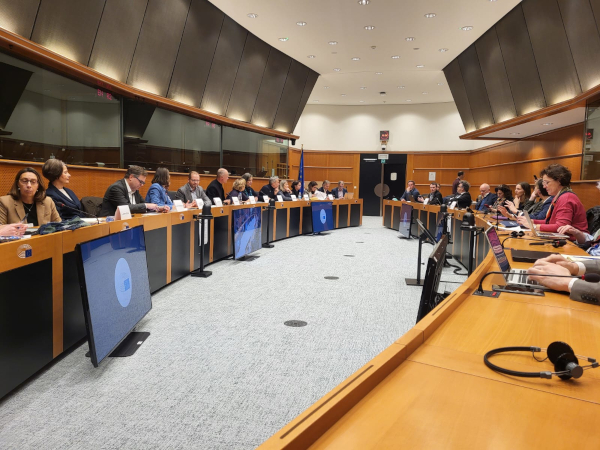Date: 4 June 2010
The lab tour and speakers at this spring’s event enable attendees to focus on the future of their businesses in order to look ahead and plan accordingly.”
The meeting began with a tour of Lawrence Berkeley National Laboratory, which is a member of the national laboratory system supported by the U.S. Department of Energy (DOE) through its Office of Science. Berkeley Lab has a façade test lab facility in which switchable electrochromic windows are tested for the purpose of studying engineering as well as occupant response. The tour included a discussion of new trends in building energy efficiency. Future ENERGY STAR® criteria was discussed, as phase two of the criteria is expected in early 2013. According to lab representatives, the response to DOE’s Highly-Insulating (R-5) Window Volume Purchase Program exceeded expectations, which is surprising given that R-5 performing products comprise only one percent of the current market.
David Weightman, from the California Energy Commission, provided an update on California Green Initiatives. Guided by research performed by the California Energy Commission’s Public Interest Energy Research, its initiatives include more stringent building code standards, and promotion of the first statewide green building code in California earlier this year. Weightman also discussed an enhanced skylight modeling and validation project, the aim of which is to establish accurate simulation methods for skylight candlepower distributions applicable to various locations, climates and skylight types.
Ryan Schmidt (project manager, Heschong Mahone Group) reviewed the California Code Change Proposals, both in the residential and commercial sectors. Schmidt gave a preview of industry participation opportunities in the 2011 California building energy efficiency standard (Title 24). The objective is for all California residential construction to achieve zero net energy by 2020.
Dr. Esamel Adibi (director, Economic Research, Chapman University) provided details from The Chapman University Economic Forecast, detailing the effects of the economic downturn on all sectors of industry. Adibi discussed the current economic recovery and the growth of jobs in residential and commercial construction. Additionally, the forecast examined home prices and sales which Adibi predicted have bottomed out and will improve in 2010.
John Hogan (senior codes analyst, Seattle Department of Planning and Development) discussed proposed building envelope criteria for ASHRAE standards 90.1 and 189.1. “Some of the new provisions in these documents limit window area and have prompted a unified industry response. They should be on everyone’s radar within the fenestration industry,” says Walker.
Walker discussed the strategic initiatives of AAMA as well as highlights from recent AAMA events, in addition to updating attendees regarding development of the association’s Green and Sustainable Product Certification Program. Current legislation, such as the new Environmental Protection Agency (EPA) lead regulations, that have had effects across the industry and a report on the development and legislation surrounding the HOME STAR and ENERGY STAR programs rounded out the information provided to attendees at this event.
For more information on the Western Region Spring Meeting, please contact Kaydeen Laird, AAMA senior meetings coordinator, via e-mail at klaird@aamanet.org.








Add new comment